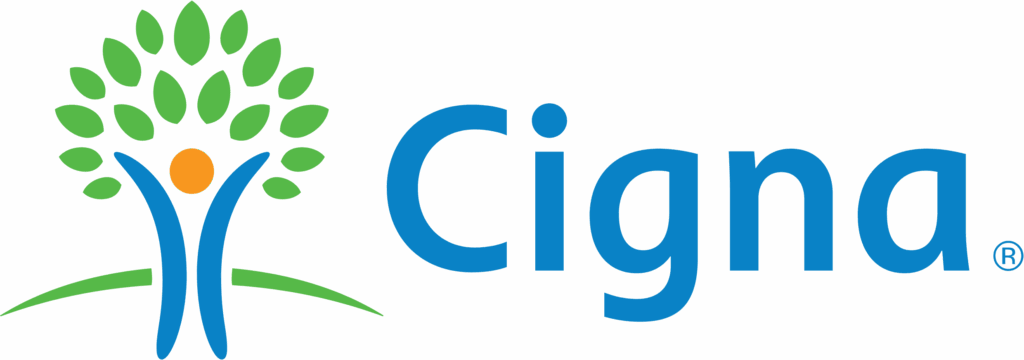
Virtual IOP Completion Rates in California: A 2025 Analysis
Medically Reviewed by:

Dr. Marco M. Zahedi
Medical Director, Compassion Recovery Center

Dr. Michael Majeski
Licensed Psychologist (LP), Compassion Recovery Center
Table of Contents
Introduction to Virtual IOP and Its Significance in California
The journey to recovery from drug or alcohol addiction is deeply personal and often filled with challenges. Finding the right support system and treatment program is crucial. In recent years, a flexible and accessible option has emerged: Virtual Intensive Outpatient Programs (Virtual IOPs). These programs offer structured therapy and support remotely, allowing individuals to receive care from the comfort and privacy of their own homes. This is particularly relevant in a sprawling and diverse state like California, where barriers like distance, time constraints, and stigma can prevent people from seeking help. As we look towards 2025, understanding the effectiveness of these programs, especially through metrics like completion rates, becomes increasingly important for individuals and families navigating the path to sobriety.
Analyzing Virtual IOP completion rates in California for 2025 is vital for several reasons. Completion rates can be an indicator of how engaging, supportive, and effective a program is. Higher completion rates often suggest that participants find the program manageable, helpful, and are motivated to see it through, which is a positive step towards sustained recovery. For those considering treatment, this data can offer insights into the potential success of virtual modalities. It also helps providers, like us at Compassion Recovery Center, to continuously refine our offerings and ensure we are meeting the needs of those we serve in communities like Orange County and beyond.
Compassion Recovery Center specializes in providing Virtual IOP programs and other forms of telehealth addiction treatment. Our mission is to make high-quality addiction and mental health treatment accessible to everyone, particularly those in Orange County, California, who may be seeking flexible, remote drug rehab Orange County options. We understand that life’s responsibilities don’t pause for recovery, which is why our remote services are designed to fit into your life, not disrupt it. If you or a loved one are struggling, we encourage you to reach out today to learn how we can support your journey. This analysis aims to shed light on the landscape of Virtual IOPs in California, offering hope and information to those seeking a new beginning.

Understanding Virtual IOP
A Virtual Intensive Outpatient Program (Virtual IOP) is a structured form of addiction treatment that individuals can attend remotely, typically from their home, using a computer, tablet, or smartphone with an internet connection. The primary purpose of a Virtual IOP is to provide comprehensive therapy and support for individuals struggling with substance use disorders, and often co-occurring mental health conditions, without requiring them to reside in a treatment facility. This model offers a significant level of care, more intensive than standard outpatient therapy but less than residential treatment or Partial Hospitalization Programs (PHP), allowing participants to maintain their daily responsibilities such as work, school, or family care. The focus is on developing coping skills, understanding addiction, preventing relapse, and building a supportive sober network, all within a flexible, accessible framework.
Key components of a robust Virtual IOP program typically include:
- Individual Therapy: Regular one-on-one sessions with a licensed therapist or counselor. These sessions delve into personal triggers, underlying issues contributing to addiction, and the development of individualized recovery strategies. Techniques like online CBT therapy (Cognitive Behavioral Therapy) are often central, helping individuals identify and change negative thought patterns and behaviors.
- Group Therapy: Multiple group sessions per week led by a qualified facilitator. These groups provide a platform for shared experiences, peer support, and learning from others facing similar challenges. Topics can range from relapse prevention and stress management to communication skills and emotional regulation. Building a sober support network is a key outcome.
- Family Program/Therapy: Involvement of family members (where appropriate and consented to by the client) to address relational dynamics, educate loved ones about addiction, and foster a supportive home environment.
- Psychoeducation: Educational sessions about the nature of addiction, the effects of substances on the brain and body, co-occurring disorders, and healthy lifestyle choices.
- Case Management: Support with practical aspects of life that can impact recovery, such as housing, employment, legal issues, or connection to community resources. The role of case managers and recovery coaches can be vital.
- Relapse Prevention Planning: Developing a comprehensive plan to identify personal relapse triggers and strategies to cope with them effectively.
- Aftercare Planning: Preparation for stepping down to a lower level of care or transitioning out of formal treatment, with a focus on maintaining long-term sobriety.
- Potential for MAT Support: For individuals struggling with opioid or alcohol dependence, some Virtual IOPs may integrate or help coordinate Medication-Assisted Treatment (MAT), offering MAT treatment online consultations or referrals where appropriate and clinically indicated.
The benefits of Virtual IOP over traditional in-person programs are numerous and compelling, especially for individuals in busy areas like Orange County or those with mobility or transportation challenges:
- Accessibility: Perhaps the most significant benefit, Virtual IOPs break down geographical barriers. Anyone with an internet connection can access high-quality care, regardless of their proximity to a physical treatment center. This is crucial for those in rural areas or those seeking specialized care not available locally. Compassion Recovery Center proudly offers remote IOP California services, reaching individuals across the state.
- Flexibility and Convenience: Sessions are often scheduled during evenings or weekends, allowing participants to maintain employment, attend school, or care for family members. This adaptability makes treatment feasible for many who couldn’t commit to an in-person program. How virtual IOP fits into a busy schedule is a common concern we address.
- Privacy and Comfort: Receiving treatment from home can reduce feelings of stigma and anxiety associated with attending a rehab facility. The familiar environment can also make it easier for individuals to open up and engage in therapy.
- Cost-Effectiveness: Virtual programs often have lower overhead costs than brick-and-mortar facilities, which can sometimes translate to more affordable treatment. Additionally, participants save on travel time and expenses. You can verify your insurance online to understand coverage for our programs.
- Real-World Application of Skills: Participants learn coping mechanisms and relapse prevention strategies in their actual living environment, allowing them to practice and apply these skills in real-time situations and challenges.
- Reduced Exposure to Illness: In an era where health concerns are paramount, telehealth options minimize the risk of exposure to communicable diseases.
At Compassion Recovery Center, our Virtual IOP Program is designed to embody these benefits, providing effective and compassionate care directly to you. If you’re considering treatment, contact us for a confidential assessment to see if our approach is right for you.
Virtual IOP in California: A 2025 Perspective
As we move further into 2025, the landscape of addiction treatment in California continues to evolve, with Virtual Intensive Outpatient Programs (Virtual IOPs) playing an increasingly prominent role. The adoption of telehealth services, accelerated by global events and supported by technological advancements, has fundamentally changed how Californians access care for substance use and mental health disorders. For a state as large and diverse as California, with bustling urban centers like Los Angeles and San Francisco, and expansive counties like Orange County, Virtual IOPs offer a solution to many longstanding barriers to treatment.
Current trends in Virtual IOP in California show a steady rise in both demand and provision. More individuals are recognizing the convenience and effectiveness of receiving care from home. This is partly due to a greater cultural acceptance of telehealth as a legitimate and effective mode of healthcare delivery. Furthermore, insurance providers are increasingly covering telehealth services, including telehealth addiction treatment, making it a financially viable option for many. We anticipate that by 2025, the integration of virtual services into standard addiction care pathways will be even more seamless, with many Californians specifically seeking out remote IOP California options.
Several factors are influencing the growing popularity of Virtual IOP in California as we look at 2025:
- Technological Proficiency: California has a tech-savvy population, comfortable with digital platforms. This familiarity lowers the barrier to entry for virtual treatment. The ongoing improvement in internet infrastructure, even in more remote areas, also contributes.
- Lifestyle Compatibility: The fast-paced lifestyle prevalent in many parts of California, especially for working professionals and parents, makes the flexibility of Virtual IOPs highly attractive. The ability to schedule therapy around work and family commitments is a significant draw. Scheduling rehab around work and life is a key benefit we highlight.
- Reduced Stigma: While societal understanding of addiction is improving, stigma still exists. Virtual treatment offers a level of privacy and discretion that can make individuals more comfortable seeking help.
- Addressing Commute and Geographic Challenges: California’s notorious traffic and vast distances can make attending in-person sessions multiple times a week a significant burden. Virtual IOPs eliminate travel time and costs, making consistent participation more feasible. This is especially true for those in sprawling areas like Orange County looking for an accessible Orange County IOP.
- Increased Awareness and Proven Efficacy: As more positive outcomes and research emerge supporting the effectiveness of virtual treatment programs like ours at Compassion Recovery Center, public trust and preference for these modalities grow. Studies are increasingly showing that virtual IOPs can achieve outcomes comparable to in-person programs for many individuals.
- Focus on Mental Health: There’s a growing recognition of the link between substance use and mental health. Virtual IOPs are well-equipped to provide integrated dual diagnosis treatment, addressing co-occurring conditions through accessible online therapy.
Telehealth is fundamentally expanding access to addiction treatment across California in 2025. It’s not just about convenience; it’s about equity. Virtual platforms can reach individuals in underserved communities, those with mobility issues, or those in areas with limited local treatment options. Accessibility in recovery is a cornerstone of telehealth’s impact. This means someone in a remote part of Northern California or a busy professional in Orange County can access the same high-quality Virtual IOP Program offered by Compassion Recovery Center. This democratization of access is perhaps one of the most profound contributions of telehealth to the addiction treatment field. As we project into 2025, the expectation is that telehealth will not just be an alternative, but a core component of a comprehensive addiction treatment strategy in the state, helping more Californians find the path to recovery. If you’re ready to explore these options, we invite you to check insurance coverage for our programs.

Analyzing Completion Rates
When evaluating the effectiveness of any addiction treatment program, one of the key metrics often considered is the “completion rate.” In the context of an Intensive Outpatient Program (IOP), whether virtual or in-person, the completion rate refers to the percentage of individuals who successfully finish the entire prescribed course of treatment as outlined in their individual care plan. This typically means attending all required therapy sessions (individual and group), participating actively, and meeting specific treatment goals set by the clinical team and the client. Understanding and analyzing Virtual IOP completion rates, particularly as we look towards California IOP 2025 trends, is crucial for gauging program efficacy and identifying areas for improvement.
The significance of completion rates in IOPs cannot be overstated. While completing a program doesn’t guarantee lifelong sobriety, it is strongly correlated with better long-term outcomes. Individuals who complete their IOP:
- Acquire Essential Skills: They have typically engaged long enough to learn and practice vital coping mechanisms, relapse prevention strategies, and communication skills.
- Build a Support Network: Completion often means they have formed connections with therapists and peers, establishing a foundation for ongoing support.
- Achieve Treatment Goals: They have worked through initial treatment goals, addressing core issues related to their substance use.
- Demonstrate Commitment: Finishing a program reflects a level of commitment and motivation that is beneficial for sustained recovery.
- Are Better Prepared for Aftercare: They are usually better equipped to transition to less intensive forms of support or aftercare, having a solid foundation from their IOP experience.
Therefore, high completion rates are generally seen as a positive indicator of a program’s ability to engage clients, provide meaningful support, and facilitate progress in early recovery. For services like telehealth addiction treatment, strong completion rates help validate the model’s effectiveness.
Methodology for analyzing completion rates in 2025 for Virtual IOPs in California would likely involve a multi-faceted approach. Data could be aggregated from several sources:
- Provider Data: Treatment centers like Compassion Recovery Center meticulously track client progress and completion. This internal data is vital.
- State Health Departments: California’s health agencies may collect anonymized data from licensed treatment providers, offering a broader overview.
- Insurance Claims Data: Insurance companies can provide insights into how many individuals who start a Virtual IOP complete the authorized number of sessions.
- Research Studies: Academic and independent research institutions often conduct studies evaluating treatment outcomes, including completion rates for various modalities.
- Patient-Reported Outcomes: Surveys and follow-up studies with former clients can also contribute to understanding completion and its perceived value.
It’s important to note that “completion” can be defined slightly differently by various programs or regulatory bodies. Standardizing these definitions is an ongoing effort to ensure accurate comparisons.
When comparing Virtual IOP completion rates with in-person IOP, the findings are increasingly encouraging for virtual models. Historically, there might have been skepticism about whether remote programs could achieve the same level of engagement. However, recent studies and anecdotal evidence suggest that Virtual IOP completion rates can be comparable to, and in some cases even exceed, those of traditional in-person programs. Several factors contribute to this:
- Reduced Barriers: The elimination of travel, childcare needs, and time off work makes it easier for individuals to attend sessions consistently.
- Comfort and Privacy: Some individuals feel more comfortable and less anxious participating from their own homes, leading to better engagement.
- Program Quality: High-quality virtual programs, like those offered by Compassion Recovery Center, utilize engaging technologies and skilled therapists who are adept at building rapport online.
However, it’s also true that both virtual and in-person programs face challenges in retaining clients. The nature of addiction itself can lead to ambivalence about treatment or premature departure. The key is not just the modality (virtual vs. in-person) but the quality of the program, the therapeutic alliance, the level of individualized support, and the client’s own motivation and circumstances. As providers of virtual rehab California services, we are committed to maximizing engagement and support to help our clients achieve successful completion and move towards lasting recovery. If you are curious about how our programs can help, start your free assessment today.
Factors Affecting Completion Rates in Virtual IOP
Achieving high completion rates in Virtual Intensive Outpatient Programs (Virtual IOPs) is a multifaceted goal, influenced by a variety of interconnected factors. These elements range from the individual characteristics of the participants to the specific design and delivery of the program itself, as well as the technological interface used. Understanding these factors is essential for providers like Compassion Recovery Center to optimize our telehealth addiction treatment services and support more individuals in successfully finishing their programs, especially as we look at trends for California IOP 2025.
Patient demographics and individual circumstances play a significant role:
- Severity of Addiction and Co-occurring Disorders: Individuals with more severe substance use disorders or complex co-occurring mental health conditions (requiring dual diagnosis treatment) may face greater challenges in completing any form of treatment. The virtual environment needs to be robust enough to support these complex needs.
- Motivation and Readiness for Change: A person’s intrinsic motivation and stage of readiness for change are powerful predictors of treatment engagement and completion. Those who are internally driven to recover are often more likely to persist through challenges.
- Social Support Systems: Strong support from family, friends, or a sober community can significantly bolster an individual’s ability to complete a program. Conversely, a lack of support or a chaotic home environment can be detrimental. Virtual IOPs often include family therapy components to help strengthen this support.
- Socioeconomic Status: Factors like stable housing, financial security, and access to necessary technology (reliable internet, a private space for sessions) can impact participation. While virtual programs can be more affordable, these baseline needs are still critical.
- Previous Treatment Experiences: Past negative experiences with treatment might make someone hesitant or skeptical, potentially affecting their commitment to a new program. Conversely, positive past experiences might encourage completion.
- Age and Life Stage: Younger adults might face different challenges (e.g., peer pressure, developing life skills) compared to older adults (e.g., established patterns of use, health concerns). Tailoring approaches to different age groups can be beneficial.
The influence of program structure and support systems is paramount for Virtual IOP completion rates:
- Therapeutic Alliance: The quality of the relationship between the client and their therapists/counselors is one of the most critical factors. A strong, trusting, and empathetic therapeutic alliance, even when built remotely, fosters engagement and a willingness to continue.
- Program Content and Engagement: Programs that offer relevant, engaging, and evidence-based content, such as online CBT therapy, DBT skills, and psychoeducation, are more likely to retain participants. Interactive group sessions and varied therapeutic activities can combat monotony.
- Flexibility and Personalization: While IOPs are structured, the ability to offer some flexibility in scheduling or tailor treatment plans to individual needs can improve retention. A one-size-fits-all approach is less effective.
- Staff Competency and Training: Therapists and staff need to be skilled not only in addiction treatment but also in delivering services effectively via telehealth platforms. This includes an understanding of how to build rapport virtually and manage group dynamics online.
- Frequency and Consistency of Contact: Regular, predictable sessions and consistent communication from the treatment team help clients feel supported and accountable.
- Clear Expectations and Goal Setting: Clients who understand the program’s expectations, their own treatment goals, and see progress are more likely to complete. Celebrating milestones can be a powerful motivator.
- Peer Support: The sense of community and shared experience fostered in group therapy is vital. Effective virtual groups can create strong bonds that encourage continued participation.
- Crisis Support: Having access to support or clear protocols for managing crises or intense cravings is crucial for preventing dropouts.
The role of technology and accessibility in completion rates for remote IOP California programs is undeniable:
- Ease of Use: The technology platform must be user-friendly, intuitive, and reliable. Technical difficulties or a complicated interface can be frustrating and lead to disengagement.
- Accessibility of Technology: Participants need access to a stable internet connection and a suitable device (computer, tablet, smartphone). Programs may need to offer support or resources for those lacking these. Setting yourself up at home is key.
- Technical Support: Prompt and effective technical support is essential to address any issues that arise, preventing frustration from derailing participation.
- Privacy and Security: Ensuring the confidentiality and security of virtual sessions is critical for building trust and making clients feel safe to share openly.
- Digital Literacy: Varying levels of comfort and skill with technology among participants must be considered. Offering orientation and ongoing support can help bridge any gaps.
At Compassion Recovery Center, we continually assess these factors to enhance our virtual rehab California services. Our goal is not just to enroll individuals but to see them through to successful completion, equipped with the tools for lasting recovery. If you’re looking for an Orange County IOP that understands these dynamics, we encourage you to get help now and learn more about our supportive approach.
Challenges in Virtual IOP and Solutions for Better Completion
While Virtual Intensive Outpatient Programs (Virtual IOPs) offer numerous advantages, they are not without challenges. Addressing these hurdles proactively is key to improving engagement and ultimately boosting Virtual IOP completion rates. As a provider of telehealth addiction treatment in California, Compassion Recovery Center is committed to understanding these challenges and implementing effective solutions to support our clients every step of the way.
Common challenges faced by participants in Virtual IOP include:
- Technological Barriers: Not everyone has reliable high-speed internet, a suitable device, or a private space for sessions. Technical glitches, poor audio/video quality, or difficulty navigating the platform can lead to frustration and disengagement. This is a concern even in tech-forward states like California.
- Distractions at Home: The home environment can be filled with distractions – family members, pets, household chores, or the temptation of other digital devices. Maintaining focus during therapy sessions can be difficult.
- Feelings of Isolation or Disconnection: Some individuals may find it harder to build rapport with therapists and peers in a virtual setting compared to in-person interactions. This can lead to feelings of loneliness or a weaker sense of community, which is counterproductive to recovery. Loneliness in recovery is a real issue we address.
- “Zoom Fatigue”: Spending many hours in front of a screen for therapy, work, or socializing can lead to mental and physical exhaustion, sometimes referred to as “Zoom fatigue.” This can diminish engagement and willingness to participate in sessions. We offer tips on combating zoom fatigue.
- Privacy Concerns: Ensuring confidentiality in a shared living space can be challenging. Participants might worry about being overheard, which can inhibit open sharing.
- Maintaining Motivation and Accountability: Without the physical structure of attending an external facility, some individuals may struggle with self-discipline to consistently log in and participate fully. Staying accountable in a virtual program requires conscious effort.
- Difficulty Managing Cravings or Crises Alone: While support is available, the immediate, physical presence of a support person is absent, which can be daunting for individuals experiencing intense cravings or emotional distress at home.
- Lack of Digital Literacy: Some individuals may not be comfortable or proficient with the technology required, creating a barrier to access and participation.
Strategies to improve completion rates and overcome these challenges are central to effective remote IOP California programs:
- Thorough Pre-Program Assessment and Orientation: Assess for technological access and literacy. Provide comprehensive orientation on using the platform, setting up a conducive environment, and managing expectations.
- Robust Technical Support: Offer readily available and patient technical support to resolve issues quickly and minimize frustration.
- Structured and Engaging Content: Design sessions to be interactive and varied. Utilize breakout rooms, visual aids, and different therapeutic modalities like online CBT therapy to maintain interest. Evidence-based therapies are key.
- Building Strong Therapeutic Alliances: Train therapists in techniques for building rapport and trust in a virtual setting. Consistent individual check-ins can strengthen this bond.
- Fostering Peer Connection: Use skilled facilitation to encourage interaction and mutual support in group sessions. Consider virtual social activities or peer support groups outside of formal therapy time.
- Flexible Scheduling and Shorter Segments: Offer varied timing for sessions where possible. Break longer sessions into smaller, more digestible segments with breaks to combat screen fatigue.
- Guidance on Creating a Therapeutic Space: Advise participants on how to create a private, distraction-free space for their sessions. Encourage the use of headphones for privacy.
- Clear Accountability Structures: Implement regular check-ins, progress monitoring, and clear communication about attendance and participation expectations.
- Skill-Building for Home Environment: Focus on teaching coping skills specifically applicable to managing triggers and stress within the home environment. Dealing with triggers is a core component.
- Crisis Intervention Protocols: Have clear, accessible protocols for participants to get immediate support if they are in crisis or experiencing severe cravings.
- Family Involvement: Educate family members on how to support the participant’s recovery and respect their need for privacy during sessions.
Innovations in telehealth continue to emerge, offering new ways to support Virtual IOP participants and enhance completion rates for virtual rehab California:
- Improved Platforms: More intuitive, secure, and feature-rich telehealth platforms are constantly being developed, offering better user experiences.
- Mobile Health (mHealth) Apps: Companion apps can provide between-session support, journaling tools, coping skill exercises, and progress tracking, reinforcing learning and engagement.
- Wearable Technology: In the future, wearables might offer data on stress levels or sleep patterns that could be (with consent) integrated into therapy to personalize care.
- Gamification: Incorporating game-like elements (e.g., points, badges for progress) can increase motivation and engagement for some individuals.
- Virtual Reality (VR): VR could be used for immersive therapy experiences, such as practicing coping skills in simulated triggering environments or for mindfulness exercises.
At Compassion Recovery Center, we are dedicated to navigating these challenges and leveraging innovative solutions to ensure our clients in Orange County and throughout California receive the highest quality virtual care. If you’re facing addiction and wondering if remote treatment can work for you, contact us for a confidential assessment to discuss your concerns and learn about our supportive approach.
Compassion Recovery Center’s Approach to Virtual IOP
At Compassion Recovery Center, we are deeply committed to providing accessible, effective, and empathetic addiction treatment. Our Virtual Intensive Outpatient Program (Virtual IOP) is specifically designed to meet the needs of individuals throughout California, with a particular focus on serving our community in Orange County. We understand that the decision to seek help is a courageous one, and our telehealth services aim to remove barriers, making it easier for you or your loved one to embark on the path to recovery from the comfort and privacy of home. Our approach is built on a foundation of clinical excellence, personalized care, and unwavering support, all contributing to positive outcomes and higher Virtual IOP completion rates.
An overview of Compassion Recovery Center’s Virtual IOP services highlights a comprehensive and integrated model of care:
- Flexible Scheduling: We offer programming that accommodates busy lives, including morning and evening sessions, allowing clients to maintain work, school, or family commitments. This flexibility is key for those searching for a practical Orange County IOP.
- Evidence-Based Therapies: Our curriculum is rooted in proven therapeutic modalities. This includes Cognitive Behavioral Therapy (online CBT therapy), Dialectical Behavior Therapy (DBT) skills training, Motivational Interviewing, and trauma-informed care. These evidence-based therapies are delivered by experienced, licensed clinicians.
- Individual and Group Therapy: Clients participate in regular individual counseling sessions for personalized attention and treatment planning, alongside multiple group therapy sessions per week. Group therapy provides a vital space for peer support, shared learning, and reducing feelings of isolation.
- Dual Diagnosis Treatment: We recognize that addiction often co-occurs with mental health conditions such as depression, anxiety, or trauma. Our program is equipped to provide integrated dual diagnosis treatment, addressing both substance use and mental health simultaneously.
- Family Involvement: We encourage family participation through dedicated family sessions and educational resources, helping to heal relationships and build a supportive home environment. Rebuilding trust after addiction is a common goal.
- Case Management: Our team provides support in navigating practical challenges, connecting clients with community resources, and planning for aftercare.
- Comprehensive Aftercare Planning: Successful completion of our Virtual IOP is just one step. We work with clients to develop a robust aftercare plan to support long-term sobriety.
- Support for Various Addictions: We offer specialized alcohol rehab programs and drug rehab programs, and can also address concerns like social media addiction treatment when it’s a contributing factor or co-occurring issue.
- MAT Coordination: For individuals who may benefit from Medication-Assisted Treatment (MAT), we can help coordinate these services, potentially including aspects of MAT treatment online where appropriate.
Unique features of Compassion Recovery Center’s telehealth addiction treatment contribute to its effectiveness and client satisfaction:
- Highly Qualified and Compassionate Staff: Our clinicians are not only licensed and experienced in addiction and mental health, but they are also specifically trained in delivering engaging and effective telehealth services. They bring genuine empathy and understanding to every interaction.
- User-Friendly Technology: We utilize a secure, HIPAA-compliant, and easy-to-navigate telehealth platform, ensuring a smooth and confidential treatment experience. We provide clear instructions and support for setting yourself up at home for virtual rehab.
- Personalized Treatment Plans: We understand that each individual’s journey is unique. Treatment plans are tailored to meet specific needs, goals, and circumstances, rather than a one-size-fits-all approach.
- Focus on Building Community: Even in a virtual setting, we prioritize creating a strong sense of community and connection among our clients through interactive groups and shared experiences.
- Commitment to Accessibility: Our remote drug rehab Orange County services are designed to reach those who might otherwise struggle to access care, breaking down geographical and logistical barriers. You can easily Verify Insurance coverage online.
- Continuous Quality Improvement: We regularly solicit feedback and monitor outcomes to refine our programs and ensure we are providing the best possible care.
Success stories and outcomes from Compassion Recovery Center speak to the transformative power of our approach. While individual results vary, we consistently see clients make significant strides in their recovery. Many individuals who complete our Virtual IOP report improved coping skills, stronger relationships, a renewed sense of hope, and the ability to maintain sobriety while managing life’s daily responsibilities. They often express appreciation for the convenience and support that allowed them to engage fully in treatment that they might not have otherwise accessed. The positive feedback we receive from clients and their families fuels our dedication to providing top-tier virtual rehab California services. We believe that recovery is possible for everyone, and our virtual programs are a testament to that belief. If you’re ready to take the first step or want to learn more, we encourage you to start your free assessment with us today.
The Future of Virtual IOP in California
The trajectory of Virtual Intensive Outpatient Programs (Virtual IOPs) in California points towards continued growth and deeper integration into the state’s healthcare system. As we look beyond 2025, several trends and potential developments are likely to shape the future of telehealth addiction treatment. The experiences of the past few years have firmly established virtual care as a viable, effective, and often preferred option for many individuals seeking help for substance use and mental health disorders. Compassion Recovery Center is poised to remain at the forefront of these advancements, continuously adapting our remote IOP California services to meet the evolving needs of our clients.
Predictions for the growth of Virtual IOP beyond 2025 are optimistic. We anticipate:
- Increased Mainstream Adoption: Virtual IOP will likely become a standard offering by most addiction treatment providers, rather than a niche service. Patients will expect it as an option, and referral sources will routinely consider it.
- Broader Demographic Reach: As technology becomes even more ubiquitous and user-friendly, Virtual IOPs will likely reach an even wider range of demographics, including older adults and those in more technologically underserved areas.
- Specialization of Virtual Programs: We may see the emergence of more specialized Virtual IOPs catering to specific populations (e.g., LGBTQ+ individuals, first responders, healthcare professionals) or specific co-occurring disorders, offering highly tailored care.
- Hybrid Models: A blend of virtual and in-person services may become more common, allowing clients to benefit from the convenience of telehealth for most sessions, with occasional in-person check-ins or specific therapies if desired and feasible.
- Greater Integration with Primary Care: Telehealth can facilitate closer collaboration between addiction specialists and primary care physicians, leading to more holistic and coordinated care, especially for individuals with co-occurring medical conditions or those needing MAT treatment online support.
Potential policy changes could significantly impact the landscape of Virtual IOP in California:
- Licensure Compacts: Interstate compacts for therapists and counselors could allow providers licensed in California to more easily treat clients who may temporarily be in other states, or vice-versa, increasing flexibility and access.
- Permanent Reimbursement Parity: Continued and permanent policies ensuring that telehealth services, including Virtual IOPs, are reimbursed by insurance at rates comparable to in-person services are crucial. Understanding California’s parity laws will remain important for both providers and clients. If these are weakened, it could hinder access.
- Data Privacy and Security Regulations: As telehealth expands, regulations surrounding data privacy (like HIPAA) will continue to evolve to address new technologies and ensure patient confidentiality is robustly protected.
- Quality Standards and Accreditation: There may be enhanced efforts to establish and enforce quality standards specifically for telehealth-based addiction treatment to ensure all providers meet a high bar for care, impacting metrics like Virtual IOP completion rates.
- Funding for Technology Access: State or federal initiatives to improve internet access and provide devices for low-income individuals could further broaden the reach of virtual treatment.
The evolving role of telehealth in addiction treatment is transforming it from a crisis response tool to a fundamental component of the care continuum. Beyond 2025, telehealth will likely facilitate:
- Enhanced Early Intervention: Easier access through telehealth might encourage individuals to seek help sooner, before their addiction becomes more severe.
- Improved Long-Term Aftercare and Relapse Prevention: Telehealth makes it easier to provide ongoing support, check-ins, and “booster” sessions long after formal treatment ends, helping to sustain recovery.
- Greater Use of Data Analytics: Aggregated, anonymized data from telehealth platforms can be used to identify trends, improve treatment protocols, and personalize care more effectively.
- Expansion of Digital Therapeutics: FDA-approved apps and digital tools for addiction and mental health may become more integrated into Virtual IOPs, offering supplementary support.
- A More Client-Centered Approach: Telehealth inherently offers more choice and flexibility, aligning with a more patient-centered model of care where individuals have more say in how, when, and where they receive treatment.
Compassion Recovery Center is excited about the future of virtual rehab California. We are committed to leveraging these advancements to enhance our programs, improve accessibility for communities like Orange County, and ultimately help more individuals achieve lasting recovery. The convenience of being able to Admissions Information online and start treatment quickly is a significant step forward. As telehealth continues to break down barriers, we anticipate a future where high-quality addiction treatment is within reach for everyone who needs it. If you’re ready to get help for substance abuse, the future of accessible care is already here.
Conclusion: Embracing Virtual IOP for a Healthier California
The journey through addiction recovery is unique for every individual, but the need for accessible, effective, and compassionate care is universal. Our exploration of Virtual Intensive Outpatient Programs (Virtual IOPs), with a forward look to California IOP 2025 trends, highlights a significant and positive shift in how addiction treatment can be delivered and experienced. The analysis of Virtual IOP completion rates and the factors influencing them underscores that well-designed virtual programs can be just as, if not more, effective in helping individuals stay engaged and achieve their treatment goals compared to traditional models.
Key findings from this analysis reveal that the success of Virtual IOPs hinges on a combination of patient-specific factors, robust program structures, empathetic support systems, and user-friendly technology. Challenges such as technological hurdles, potential for isolation, and distractions in the home environment are real, but they are surmountable with proactive strategies, innovative solutions, and a dedicated clinical team. The convenience, flexibility, and privacy offered by telehealth addiction treatment are powerful motivators for participation, especially in a diverse and dynamic state like California. For those seeking remote drug rehab Orange County options, Virtual IOPs represent a lifeline, allowing them to integrate intensive treatment into their daily lives without uprooting their commitments to work or family.
The importance of Virtual IOP in California cannot be overstated. It addresses critical barriers to care, such as geographical distance, transportation issues, stigma, and time constraints. By leveraging technology like online CBT therapy and providing comprehensive support including potential for MAT treatment online coordination, programs like ours at Compassion Recovery Center are making a tangible difference. We empower individuals to seek help from the safety and comfort of their own homes, fostering an environment where healing can begin and flourish. The continued growth and evolution of virtual rehab California services promise an even more accessible and equitable future for addiction treatment.
If you or someone you care about is struggling with drug or alcohol addiction, please know that help is available, and recovery is possible. Virtual IOP offers a modern, effective, and convenient path forward. At Compassion Recovery Center, we are dedicated to providing the highest quality remote care, tailored to your individual needs. We invite you to take the courageous first step. You can verify your insurance online through our secure portal, explore our Virtual IOP Program details, or contact us for a confidential assessment. Let us help you start your recovery journey today and build a healthier, brighter future.
What is the typical daily or weekly schedule for a Virtual IOP?
How do Virtual IOP completion rates compare to in-person programs?
What factors contribute to higher completion rates in Virtual IOP?
How does telehealth enhance the effectiveness of Virtual IOP?
What challenges do participants face in completing Virtual IOP?
How can technology improve Virtual IOP completion rates?
What are the benefits of choosing a Virtual IOP in California?
How does Compassion Recovery Center support Virtual IOP participants?
Struggling to balance life while needing support? Get expert virtual care and start your recovery journey, anytime, anywhere.
We’re learning more each day.
Researchers and doctors are making exciting progress in understanding mental health and addiction—bringing hope to millions.
Your genes don’t define you.
Genetics can play a part, but they don’t decide your future. Mental health is shaped by many factors, and healing is always possible.
There's no one-size-fits-all.
The right treatment often includes a mix of therapy, medication, and compassionate care—tailored just for you.









